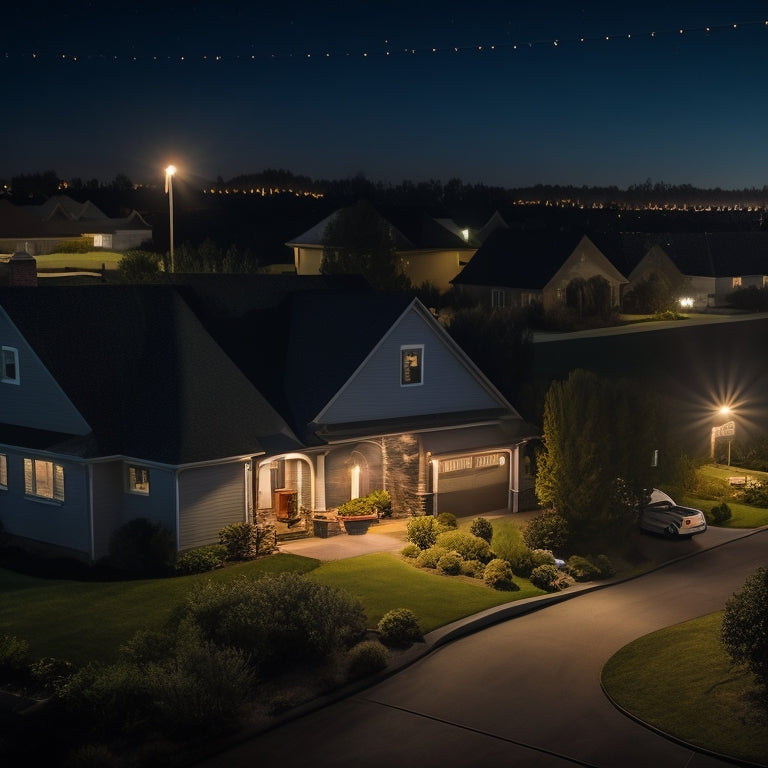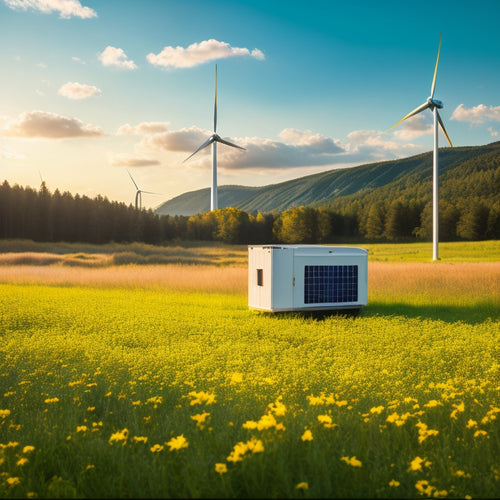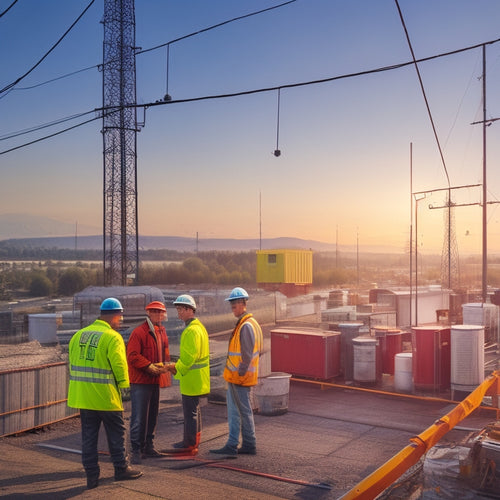
Why Emergency Home Kits Need Renewable Power
Share
When preparing an emergency home kit, you need a reliable power source to stay connected and access essential appliances. Traditional generators are limited by fossil fuel supply chains, price volatility, and grid vulnerabilities. In contrast, renewable energy sources like solar power guarantee a steady supply, reduce reliance on the grid, and minimize risks associated with power outages. A solar panel battery backup system stores excess energy for later use, providing energy autonomy and reducing anxiety during power failures. By integrating renewable power into your emergency kit, you'll be better prepared to face unexpected situations - and there's more to investigate to assure your kit remains effective and efficient over time.
Key Takeaways
- Renewable energy sources like solar and wind ensure a steady power supply during emergencies, reducing reliance on traditional power sources.
- Solar panel battery backup systems store excess energy for nighttime or low sunlight use, providing energy autonomy during outages.
- Traditional power sources like generators are limited by supply chain issues, price volatility, and environmental implications, making them unreliable.
- Renewable power systems offer a clean, quiet, and low-maintenance alternative, providing a reliable backup power solution during emergencies.
- Future-proofing emergency kits with scalable and upgradeable renewable power systems enhances resilience and reduces anxiety during power failures.
Renewable Energy in Emergency Situations
During emergency situations, access to electricity can be a matter of life and death. You need a dependable source of power to stay connected, receive vital updates, and maintain essential appliances.
Renewable energy can be a transformative element in emergency preparedness. By incorporating renewable energy sources, such as solar or wind power, into your emergency kit, you can guarantee a steady supply of electricity.
Solar panel battery backup systems, for instance, provide a cost-effective and eco-friendly solution that stores excess energy generated during the day for later use, offering renewable security during low sunlight periods or nighttime. This is especially important for medical equipment, communication devices, and lighting.
Renewable energy provides a sustainable and self-sufficient solution, reducing your reliance on traditional power sources. With a renewable energy system, you'll be better equipped to handle emergency situations, minimizing the risk of power outages and keeping you and your loved ones safe.
Limitations of Traditional Power Sources
As you prepare for emergency situations, it's essential to acknowledge the limitations of traditional power sources, which can leave you vulnerable to power outages.
Traditional power sources, such as generators, rely heavily on fossil fuels, making them prone to supply chain disruptions and price volatility. Furthermore, they contribute to fossil fuel dependence, which has significant environmental implications.
The grid itself is also vulnerable to natural disasters, cyber attacks, and physical damage, making it an unreliable source of power during emergencies.
When the grid goes down, traditional power sources often fail to provide a reliable backup, leaving you without power when you need it most.
Benefits of Solar Power Systems
You've likely experienced the frustrations of traditional power sources firsthand, watching your lights flicker and your appliances shut down when the grid fails.
In contrast, solar power systems offer a reliable alternative, utilizing the sun's energy to provide sustainable power solutions. One of the significant solar energy advantages is its ability to operate independently of the grid, ensuring a steady supply of electricity even during outages.
This independence also allows for energy autonomy, providing peace of mind during outages. Additionally, solar power systems require minimal maintenance, reducing the risk of mechanical failures.
With solar energy, you can enjoy a clean, renewable source of power that's less prone to interruptions, making it an ideal choice for emergency home kits.
Reliable Backup Power Options
In emergency situations, every minute counts, and having reliable backup power options is crucial to maintaining a safe and comfortable environment. You need a system that can provide continuous power when the grid fails.
Portable generators are a popular choice, but they've limitations. They're noisy, produce emissions, and require frequent refueling. A more reliable option is battery storage, which can be charged from solar panels or the grid, offering a scalable energy storage solution seamless system integration that enhances user experience.
This setup guarantees a quiet, emission-free, and low-maintenance power source. When the grid goes down, your battery storage system kicks in, providing a steady flow of electricity.
Future-Proofing Your Emergency Kit
Beyond the immediate need for reliable backup power, it's vital to think about the long-term viability of your emergency kit.
You want to guarantee it remains effective and efficient over time, especially as technology advances and your needs change.
To future-proof your kit, consider the following:
-
Upgradeability: Choose components that can be easily upgraded or replaced as new technologies emerge.
-
Scalability: Select systems that can adapt to changing energy demands and storage needs.
-
Interoperability: Confirm your kit's components can work seamlessly with other sustainable resources, such as solar panels or wind turbines.
- Energy independence: Design your kit to prioritize energy independence, reducing reliance on grid power and enhancing your overall resilience.
Frequently Asked Questions
How Do I Maintain My Solar Panels in Extreme Weather Conditions?
You're right to wonder if solar panels can withstand extreme weather; in fact, studies show they can. To maintain yours, you'll want to regularly clean them, secure them with sturdy mounts, and consider tilt adjustments for heavy snowfall or high winds.
Can I Use Renewable Energy to Power Medical Equipment?
You can use renewable energy to power medical equipment, leveraging solar or wind power to charge backup batteries or fuel cells, ensuring continuous operation of critical devices like ventilators, oxygen concentrators, and dialysis machines.
Are There Any Government Incentives for Emergency Kit Renewables?
You can investigate government grants and renewable rebates for your emergency kit, as many programs offer incentives for adopting sustainable energy solutions, such as the Federal Solar Investment Tax Credit, which you can utilize to offset equipment costs.
How Long Does It Take to Set up a Solar Power System?
You'll typically spend 1-3 days on the solar installation process, depending on system complexity and local permits; afterwards, you can optimize your solar system efficiency by monitoring performance and adjusting angles seasonally.
Can I Use Wind Power in Conjunction With Solar Energy?
You imagine a serene scenery with a wind turbine spinning lazily, complementing your solar panels. Yes, you can integrate wind power with solar energy through wind turbine integration, creating hybrid energy systems that optimize your renewable energy output.
Related Posts
-

Sustainable and Eco-Friendly Generators for a Reduced Carbon Footprint
Sustainable and eco-friendly generators are perfect for cutting your carbon footprint and increasing energy efficienc...
-

What Happens Without a Charge Controller in Solar Panels
Without a charge controller in your solar panel system, you risk overheating batteries due to overcharging, which can...
-

Smart Grid Technology Implementation Challenges
You'll encounter several challenges when implementing smart grid technology, particularly in cost management, scalabi...


